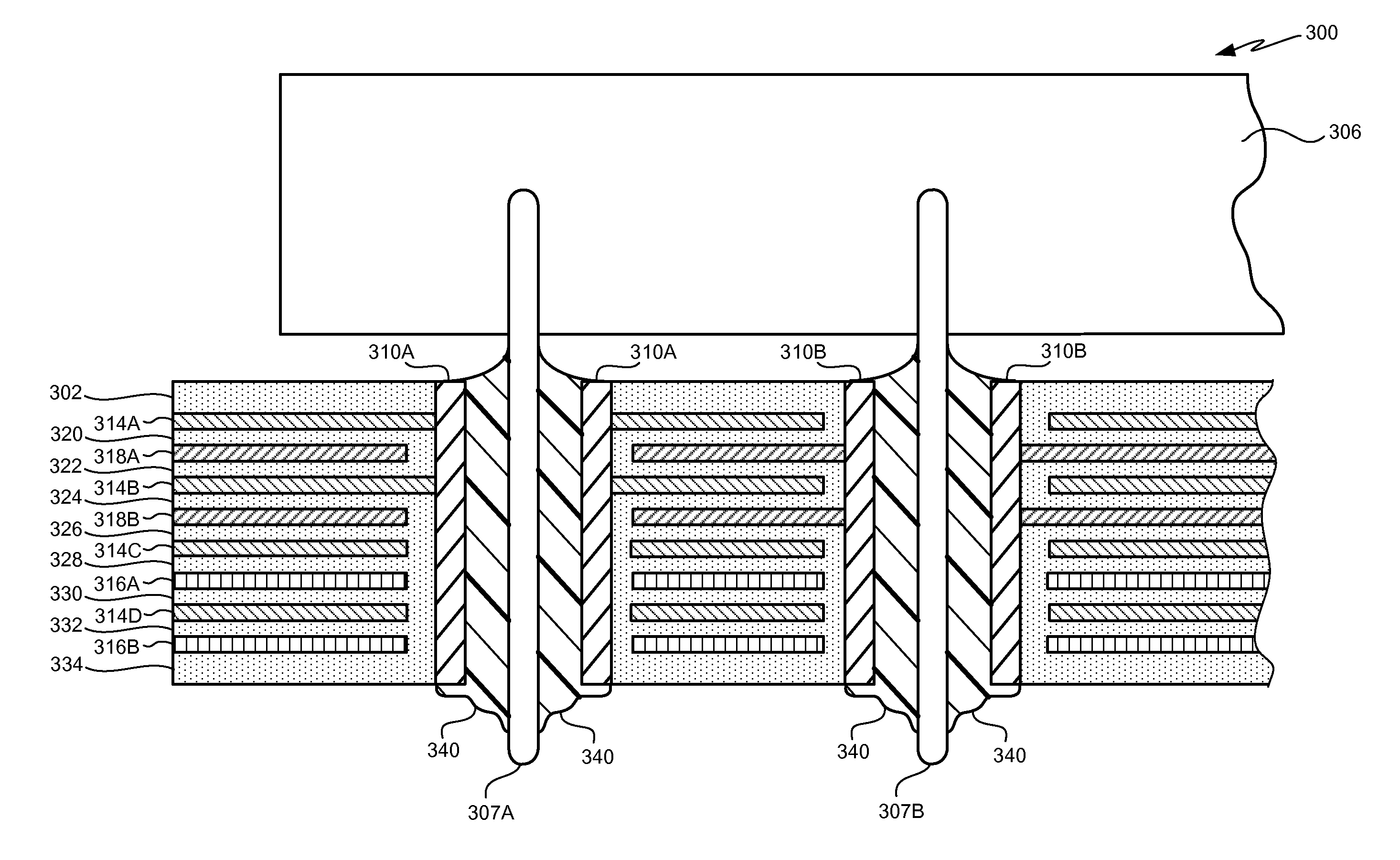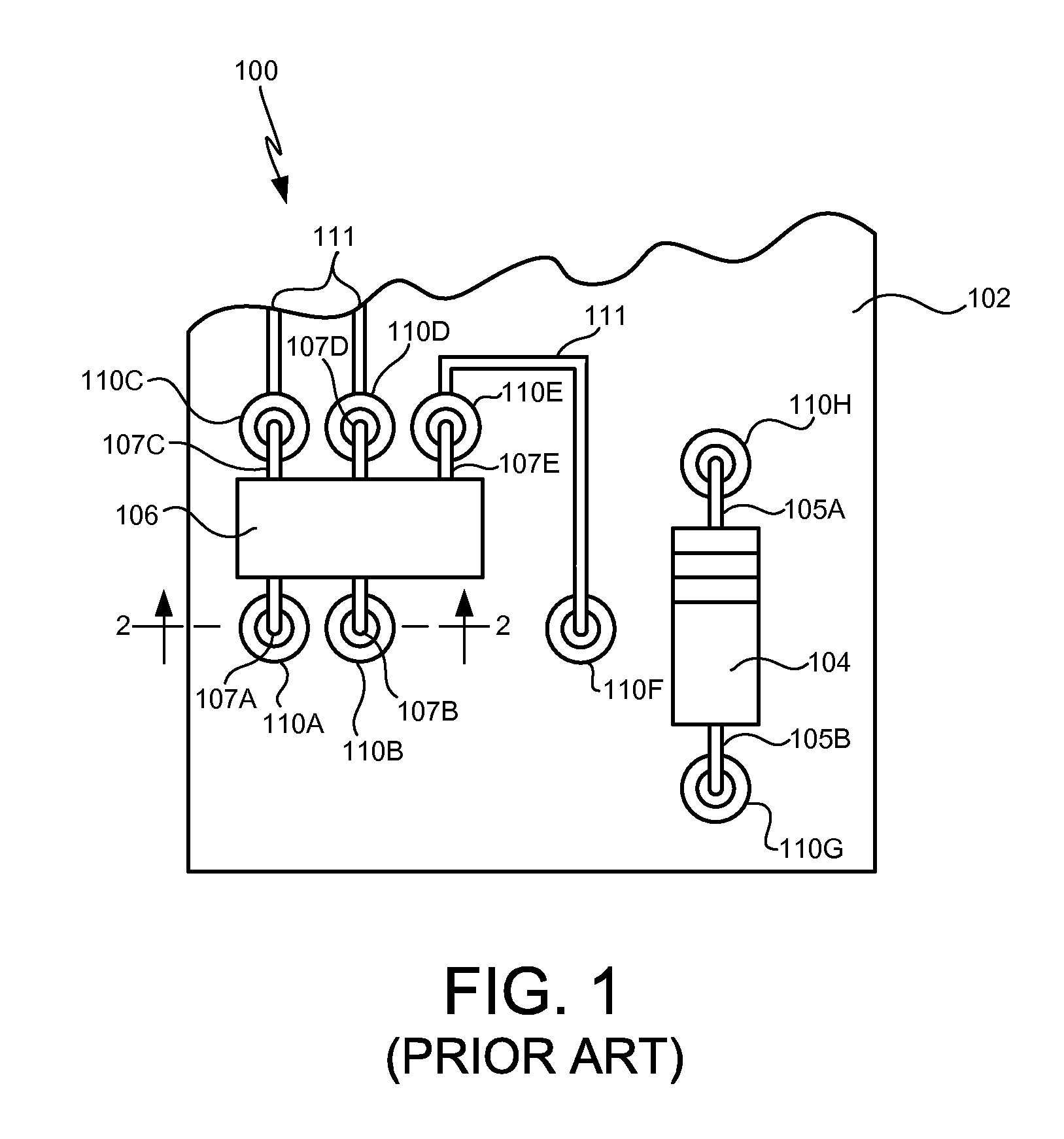Optimizing PCB power and ground connections for lead free solder processes
a technology of lead free solder and power and ground connection, which is applied in the direction of printed circuit manufacturing, printed circuit components, printed circuit incorporation, etc., can solve the problems of high initial cost, poor joint, and much more layout effort, and achieves improved connection quality, reduced heat sinking effect of layers, and high mechanical and electrical reliability
- Summary
- Abstract
- Description
- Claims
- Application Information
AI Technical Summary
Benefits of technology
Problems solved by technology
Method used
Image
Examples
Embodiment Construction
FIGS. 3 and 4 illustrate top and cross-sectional views of a multi-layer PCB 300 that provides enhanced connections with electronic component leads, pins or the like, particularly when the components are attached to the PCB 300 using a lead-free solder process. The top view of FIG. 3 is similar to that of FIG. 1, but as can be seen from the cross-sectional view of FIG. 4, a number of features of the PCB 300 are present that differ from the prior PCB 100 of FIGS. 1 and 2.
The PCB 300 is configured with a resistor 304 and an integrated circuit (IC) 306. The PCB 300 includes a plurality of plated through-holes (PTHs) 310 that may be used to couple electronic components (e.g., the resistor 304 and the IC 306) from the top layer 302 of the PCB 300 to one or more conductors (not shown in FIG. 3) within or on the bottom surface of the PCB 300. In this regard, the PTHs 310 may receive component leads or pins 305A-305B, 307A-307-E extending from the electronic components 304, 306. The PCB 300 ...
PUM
| Property | Measurement | Unit |
|---|---|---|
| weight | aaaaa | aaaaa |
| weight | aaaaa | aaaaa |
| weight | aaaaa | aaaaa |
Abstract
Description
Claims
Application Information
 Login to View More
Login to View More - Generate Ideas
- Intellectual Property
- Life Sciences
- Materials
- Tech Scout
- Unparalleled Data Quality
- Higher Quality Content
- 60% Fewer Hallucinations
Browse by: Latest US Patents, China's latest patents, Technical Efficacy Thesaurus, Application Domain, Technology Topic, Popular Technical Reports.
© 2025 PatSnap. All rights reserved.Legal|Privacy policy|Modern Slavery Act Transparency Statement|Sitemap|About US| Contact US: help@patsnap.com



